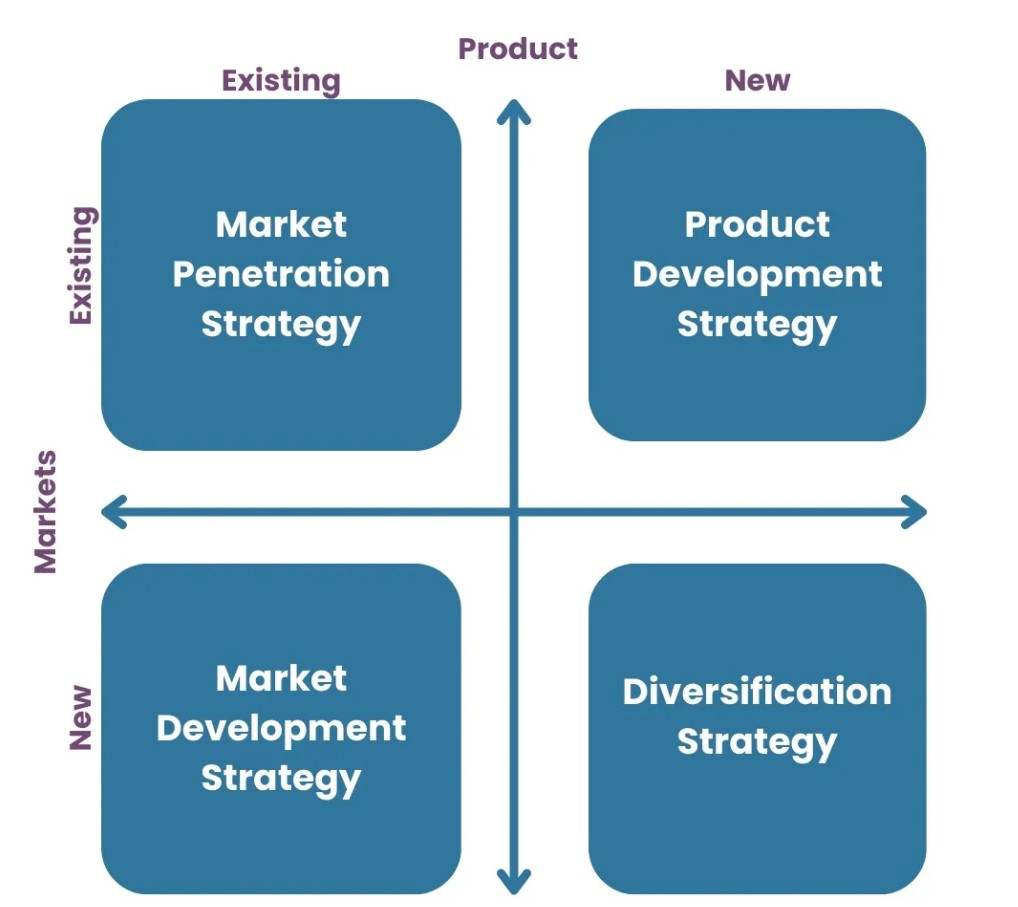The Ansoff Matrix, also known as the Product-Market Growth Matrix, is a strategic tool created by Igor Ansoff in 1957.
It helps companies identify potential growth opportunities by focusing on products and markets.
The matrix presents four different growth strategies based on whether the company wants to focus on existing or new products and whether it wants to target existing or new markets.
🧩 The Four Growth Strategies in the Ansoff Matrix:
The matrix has four strategies based on whether products and markets are new or existing:
| Existing Products | New Products | |
|---|---|---|
| Existing Markets | ✅ Market Penetration | 🆕 Product Development |
| New Markets | 🆕 Market Development | 🚀 Diversification |
1. ✅ Market Penetration
Focus: Increase sales of existing products in existing markets.
-
Strategy: Attract more customers, increase usage, gain competitor’s customers.
-
Examples: Discounts, promotions, advertising, loyalty programs.
👉 Risk Level: Low
👉 Example: Coca-Cola increasing sales in India via offers.
2. 🆕 Product Development
Focus: Introduce new products to existing markets.
-
Strategy: Innovate, improve, or launch new versions of products.
-
Examples: Tech upgrades, product line extensions.
👉 Risk Level: Moderate
👉 Example: Apple launching a new iPhone model to its existing user base.
3. 🆕 Market Development
Focus: Sell existing products in new markets.
-
Strategy: Enter new geographical areas or customer segments.
-
Examples: Targeting new age groups, regions, or international markets.
👉 Risk Level: Moderate to High
👉 Example: Starbucks entering India or China.
4. 🚀 Diversification
Focus: New products in new markets.
-
Strategy: Enter completely different industries or customer segments.
-
Types:
-
Related Diversification: Similar industry (e.g., Apple launching smartwatches)
-
Unrelated Diversification: Different industry (e.g., Tata entering software, steel, salt)
-
👉 Risk Level: High (highest of all)
👉 Example: Amazon moving from online retail to cloud computing (AWS)
🎯 Summary of the Ansoff Matrix:
| Strategy | Products | Markets | Risk | Example |
|---|---|---|---|---|
| Market Penetration | Existing Products | Existing Markets | Low Risk | Coca-Cola increasing market share |
| Product Development | New Products | Existing Markets | Medium Risk | Apple launching new iPhone models |
| Market Development | Existing Products | New Markets | Medium to High Risk | McDonald’s expanding to new countries |
| Diversification | New Products | New Markets | High Risk | Amazon expanding into cloud services |
The Ansoff Product-Market Matrix is a strategic tool used by businesses to identify and evaluate growth opportunities. It was developed by Igor Ansoff and is also known as the Ansoff Growth Matrix.
